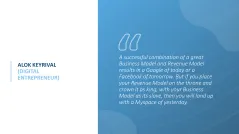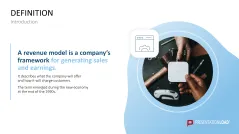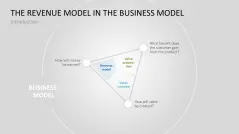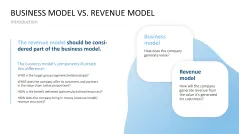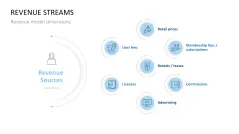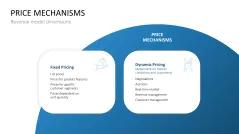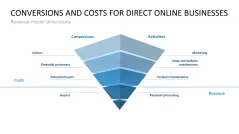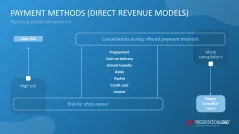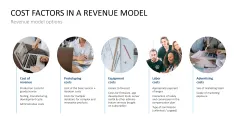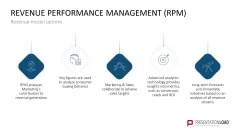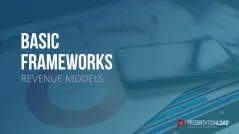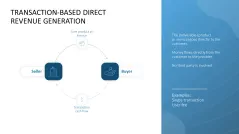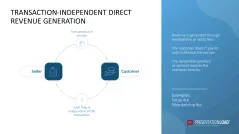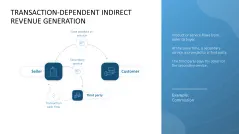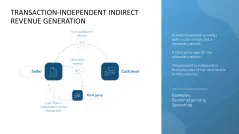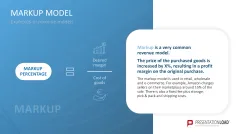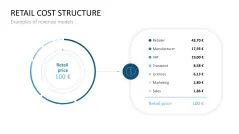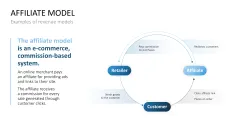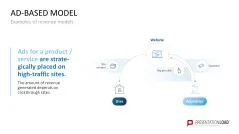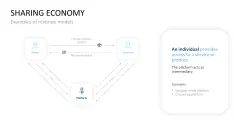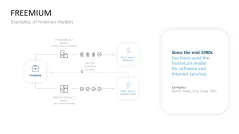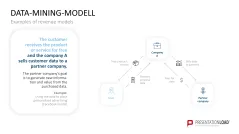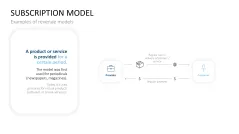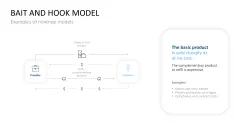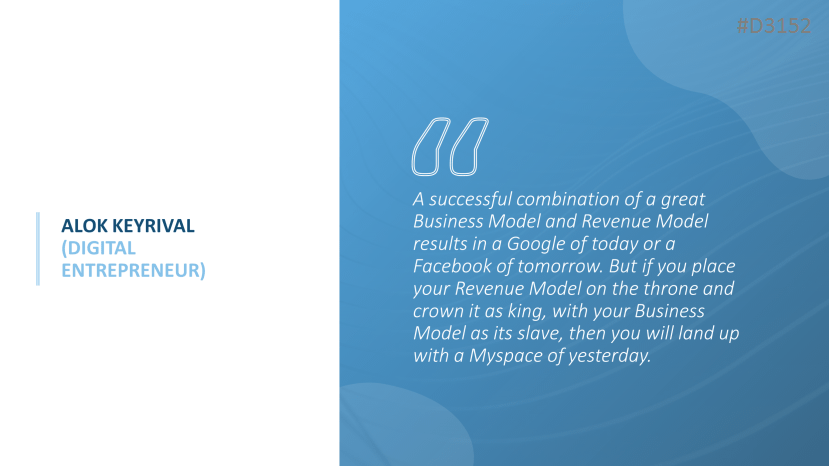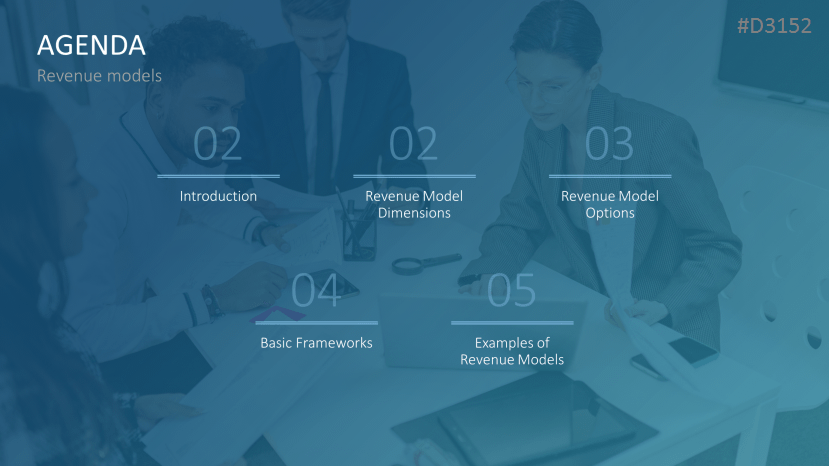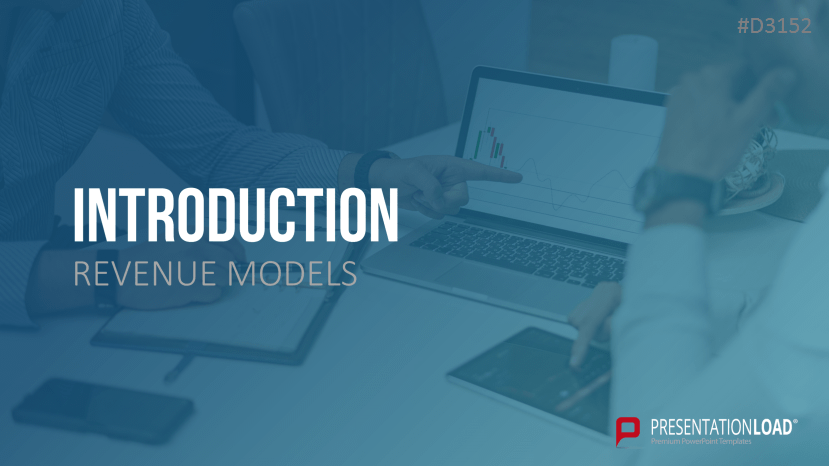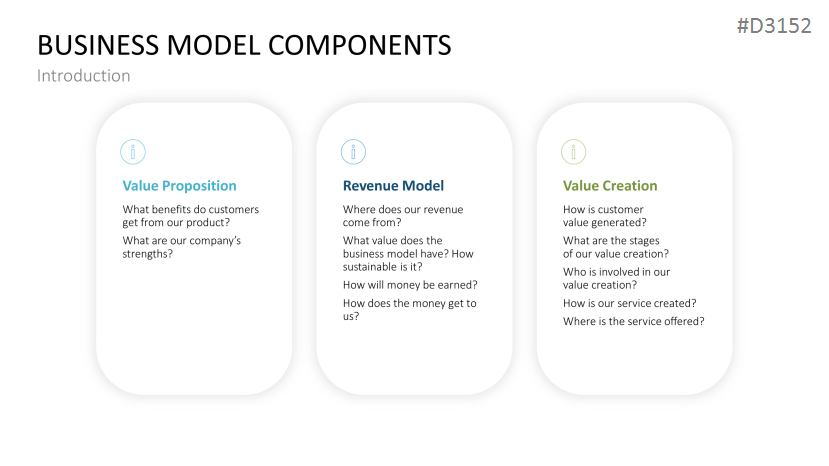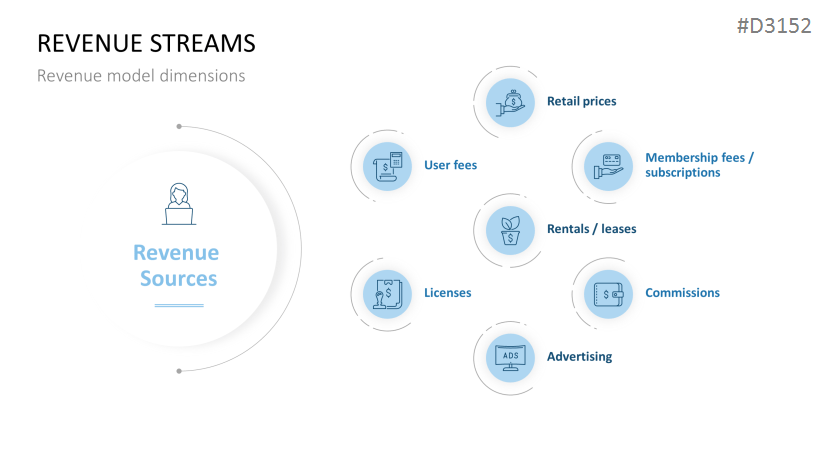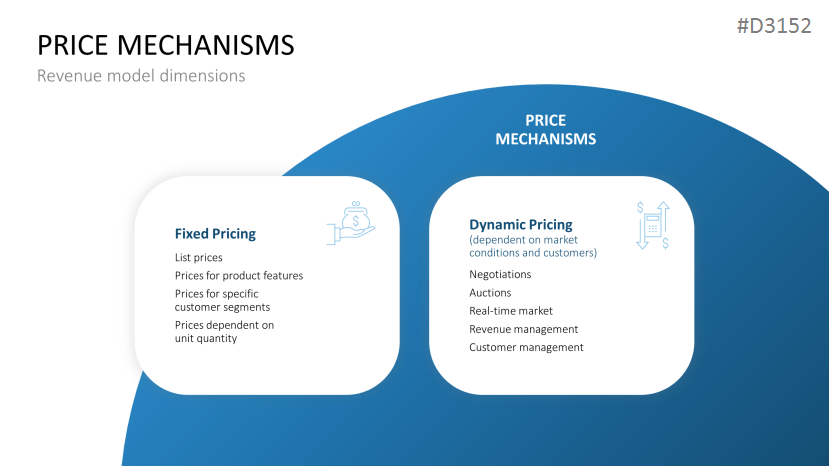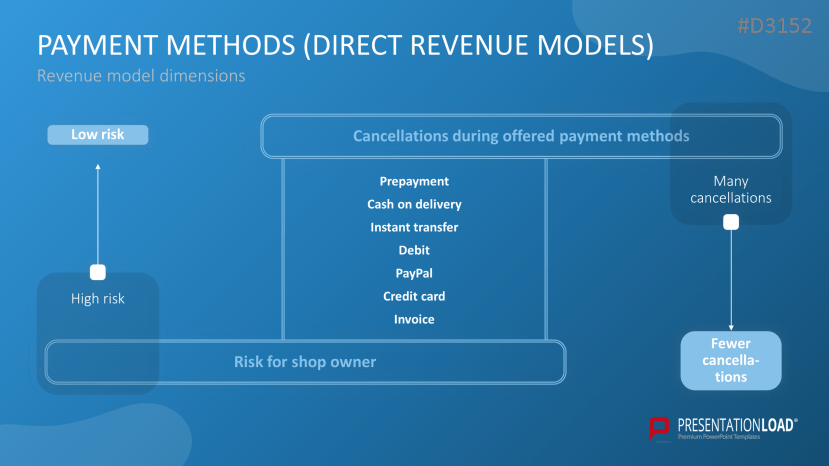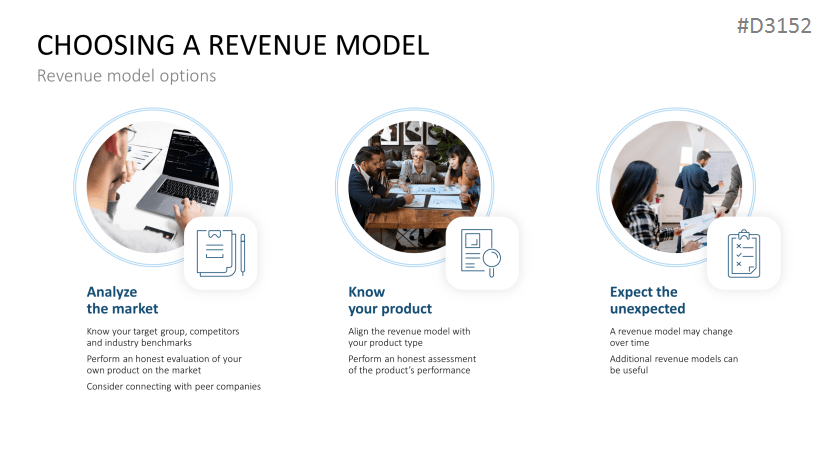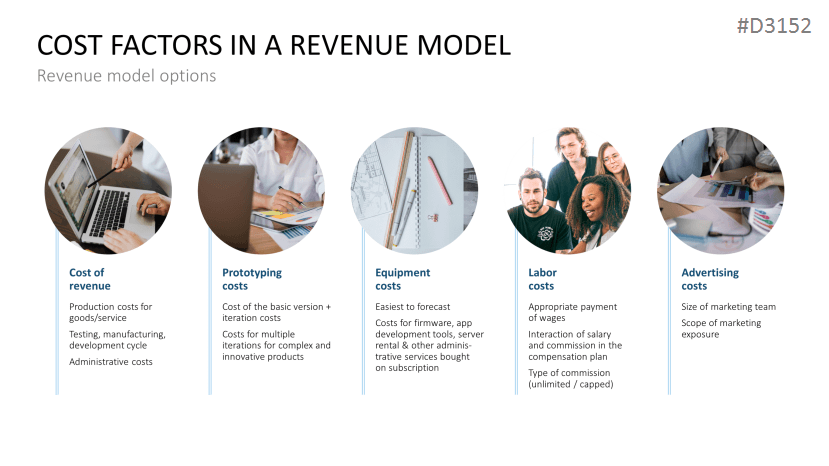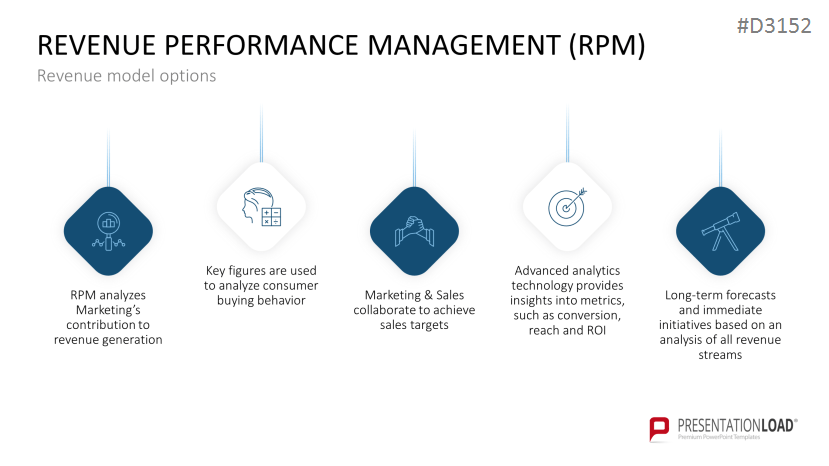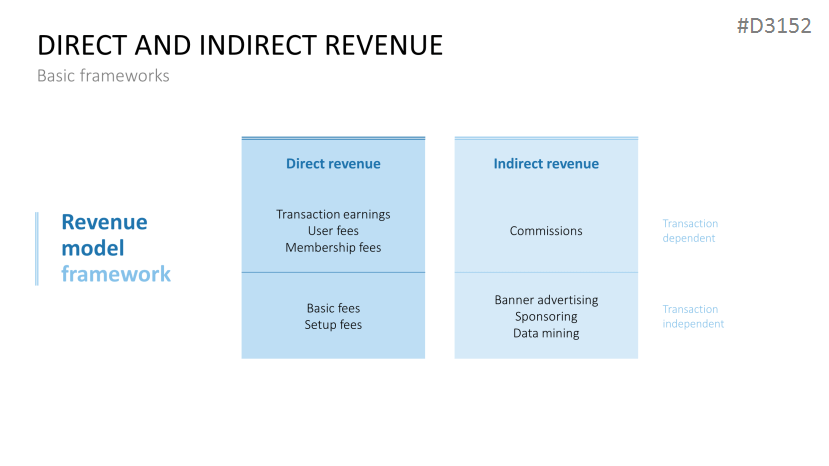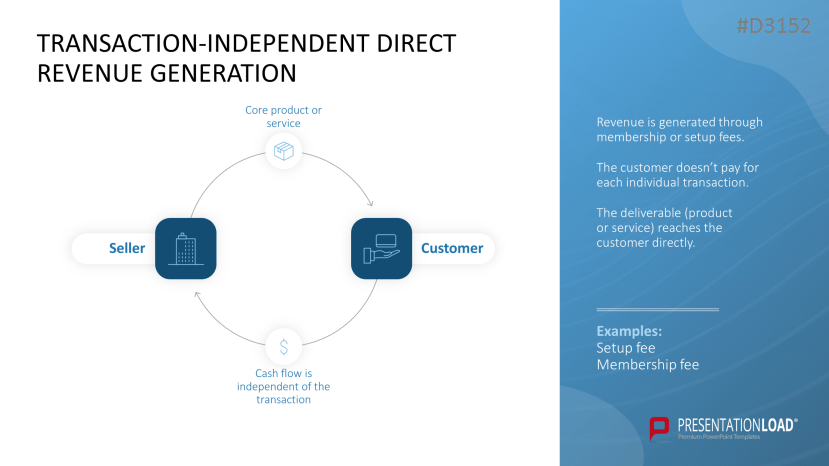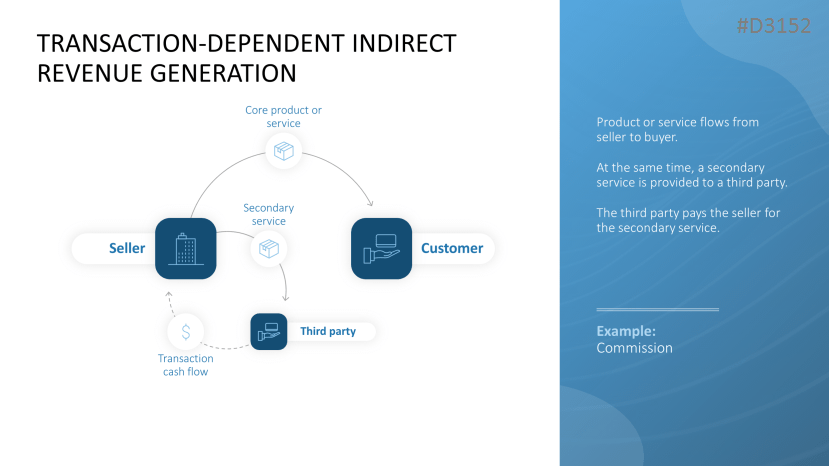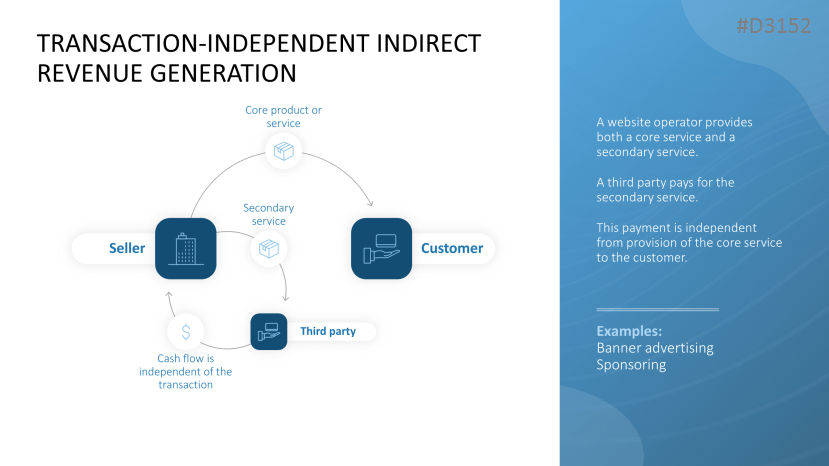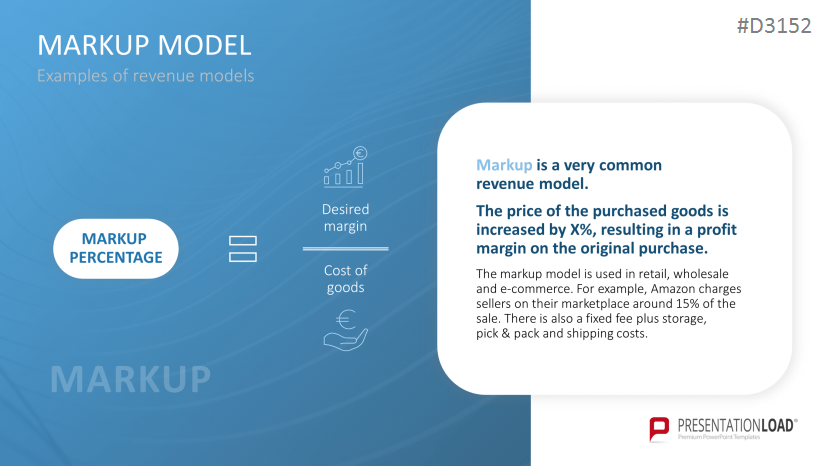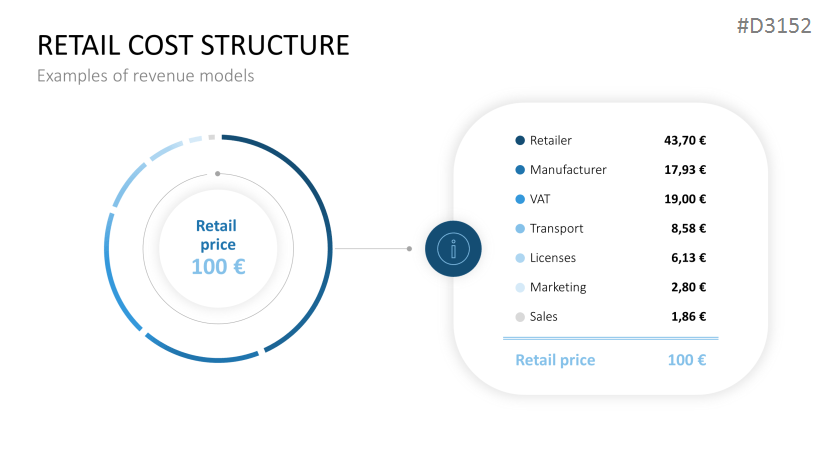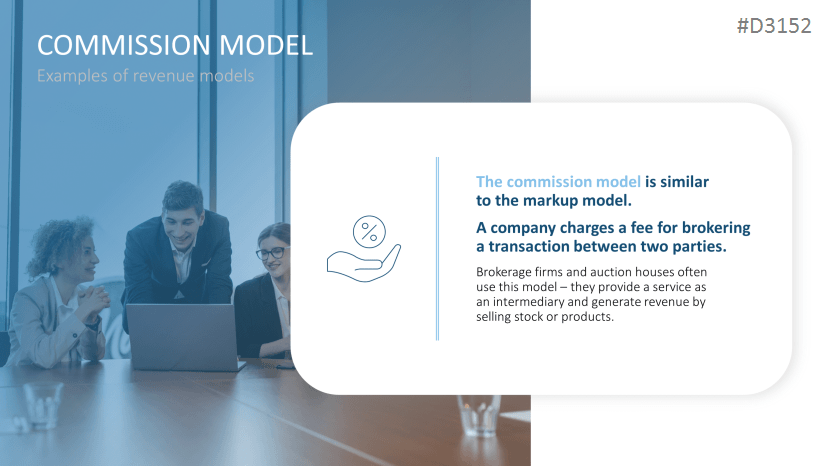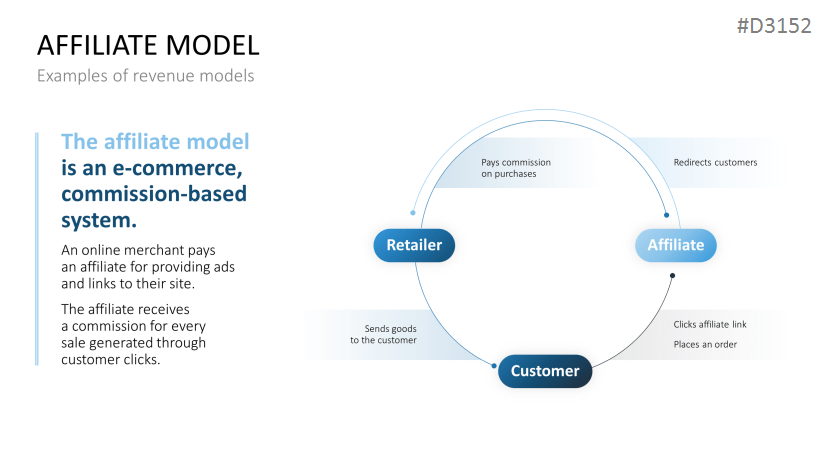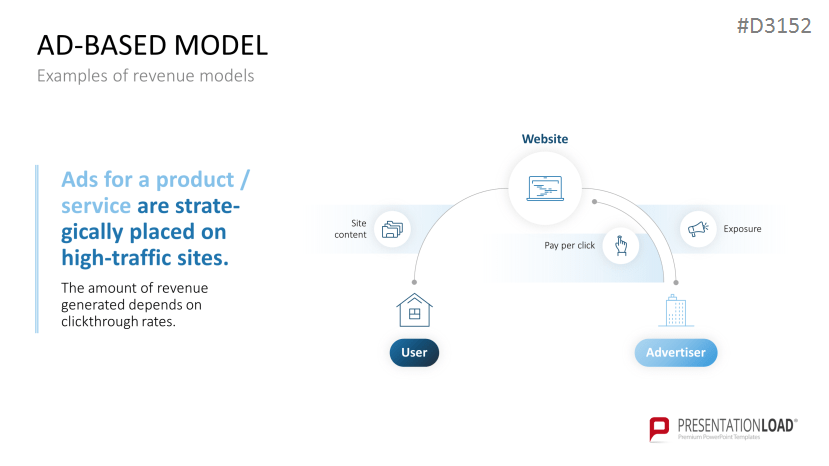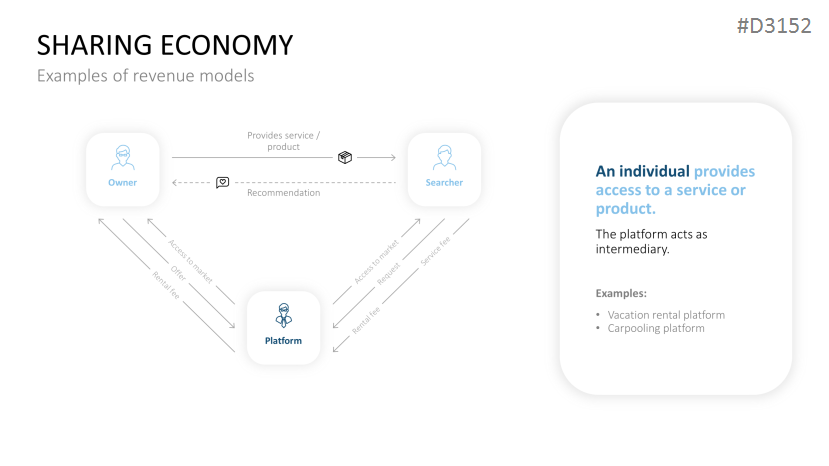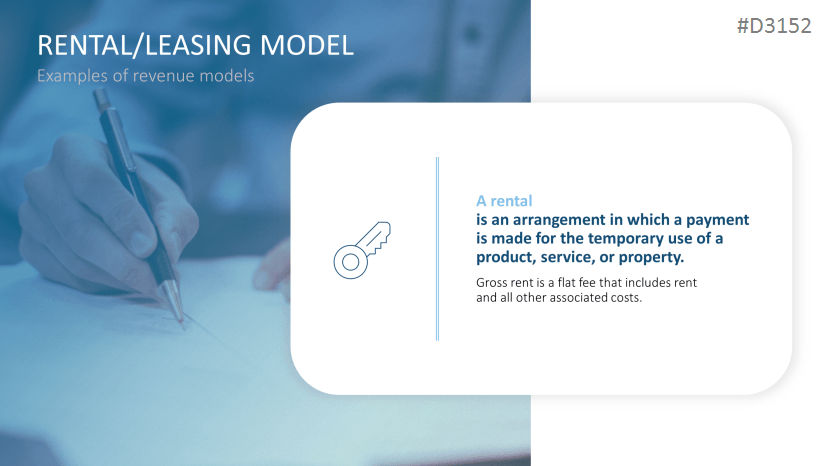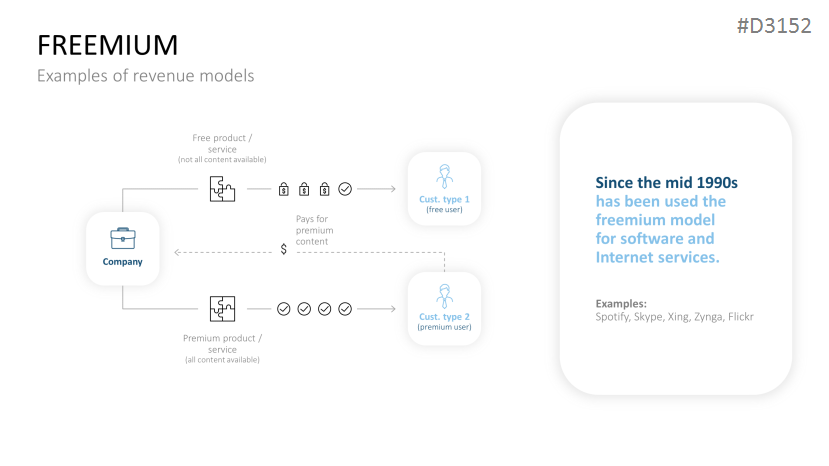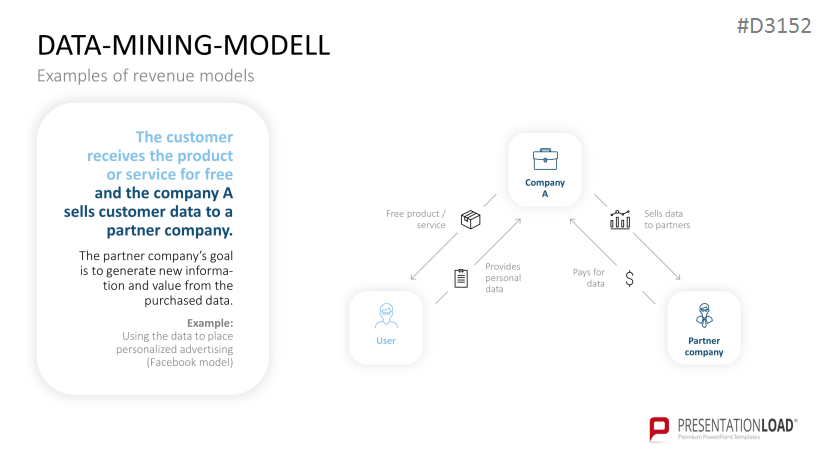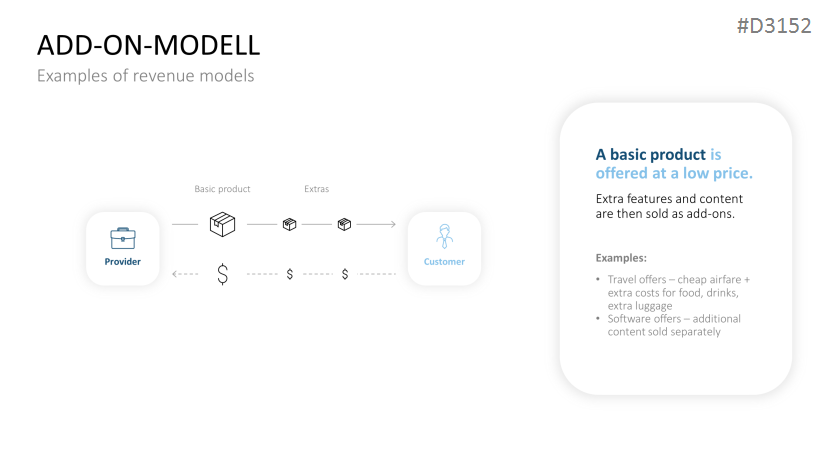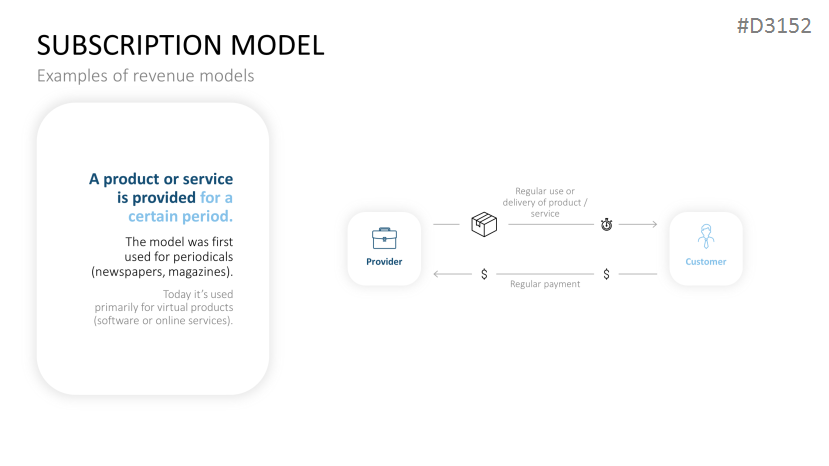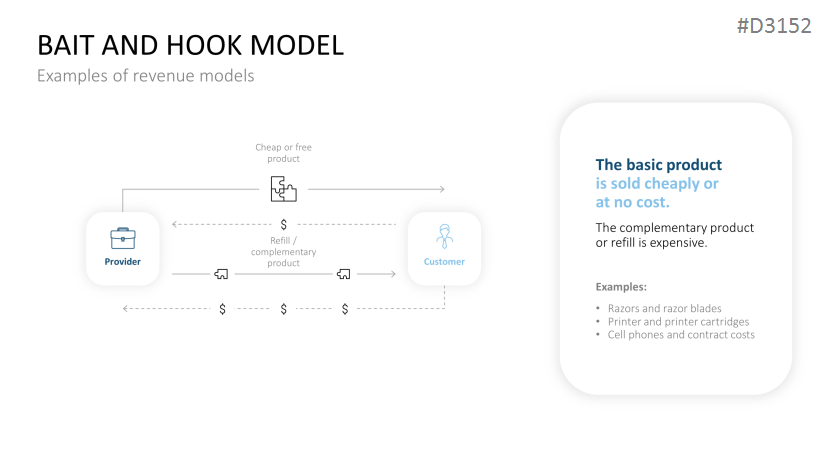
Diverse ways of generating revenue: Established and innovative revenue models
The revenue model represents an important part of the business model, defining how revenue will be generated. There are differences between transaction-dependent, transaction-independent and indirect and direct revenue. An example of a retail revenue model is markup, where retailers purchase products at a low price and resell them to consumers at a markup. Other models, such as commission, production and rental/leasing, are also well-known ways of generating revenue. In the online sector, special revenue models such as the affiliate model or the ad-based model have emerged. This template clearly illustrates and explains a wide range of revenue models.
Present the revenue model as an essential part of the business model
Use this PowerPoint template to present the revenue model as an essential part of the business model, explain the basic principles and to facilitate choosing a suitable revenue model for a new business venture. Different revenue model dimensions, such as revenue streams and price mechanisms, are presented as graphics. These slides explain various possible revenue model frameworks to help you select the right revenue model. They also provide insight into how to calculate costs for your revenue model. Numerous examples from different sectors illustrate the wide variety of established revenue models, from the commission model to online-specific models, such as the affiliate model.
With the Revenue Model PowerPoint template, you can
- present a wide variety of models for generating revenue
- use slides with infographics on revenue model dimensions and options
- present the different revenue model frameworks
This PowerPoint template includes:
- Definition
- The revenue model in the business model
- Business model vs. Revenue model
- Business model components
- Revenue streams
- Price mechanisms
- Conversions and costs for direct online businesses
- Payment methods
- Choosing a revenue model
- Cost factors in a revenue model
- Revenue performance management (RPM)
- Direct and indirect revenue
- Transaction-based direct revenue generation
- Transaction-independent direct revenue generation
- Transaction-dependent indirect revenue generation
- Transaction-independent indirect revenue generation
- Markup model
- Retail cost structure
- Commission model
- Affiliate model
- Ad-based model
- Sharing economy
- Rental/leasing model
- Freemium
- Data mining model
- Add-on model
- Subscription model
- Bait and hook model

